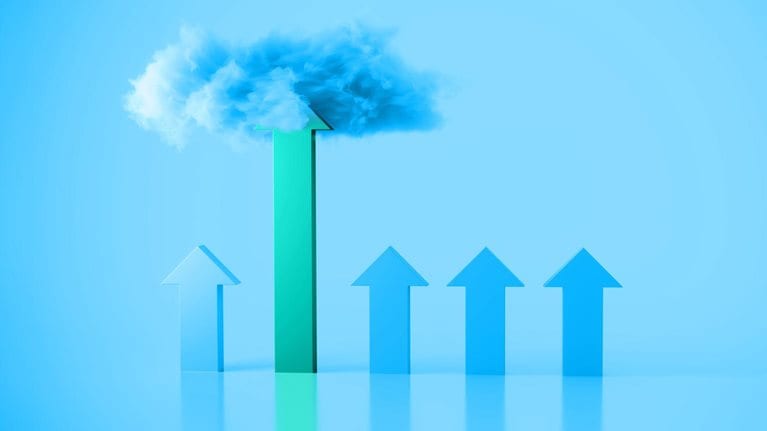Nearly one-third (27 percent) of greenhouse-gas (GHG) emissions globally are estimated to come directly from agriculture.1 To help address the situation, a burgeoning ecosystem of companies, including entrepreneurs and investors, is exploring ways to reduce the sector’s emissions through regenerative agriculture practices, which include helping to restore the health of degraded soil.
Founded in 2018, Copenhagen-based Agreena was one of the first companies in Europe to offer a soil carbon program, in which farmers are encouraged to use regenerative farming methods to sequester carbon from the atmosphere and store it in the soil in exchange for carbon certificates. With funding from Giant Ventures and others, Agreena is building and scaling a suite of fintech and agricultural technology (agtech) solutions.
Agreena cofounder and CEO Simon Haldrup and Giant Ventures cofounder and managing partner Cameron McLain spoke with McKinsey’s Philipp Hillenbrand about the challenges of building and scaling a business focused on regenerative farming and the opportunities in this area going forward.
Philipp Hillenbrand: What are some of the early challenges you faced when you founded Agreena in 2018 that have persisted to this day, and what has changed?
Simon Haldrup: One initial challenge when we launched the soil-carbon-credit program was that nearly no one had done this before, so there were virtually no methods or standards for such a program. Since then, the landscape of policies, standards, and regulations has been evolving rapidly, but that doesn’t mean it’s becoming less complex. As a fintech and agtech company working in the climate space, we must navigate and comply with myriad regulatory and other requirements.
That said, the biggest and most important challenge then, now, and in the future is mobilizing farmers to adopt critical new ways of farming and related technologies. Agriculture is highly fragmented and operates on low margins, and farmers have a lot on their plates, so sales cycles are generally long, and scaling up is challenging.
Philipp Hillenbrand: Like any venture capital firm, Giant Ventures operates in a high-risk environment. Is the recent deflation of start-up valuations a risk, an opportunity, or both?
Cameron McLain: It depends on where you sit. For growth investors with sizable legacy portfolios that were funded and valued during the boom years of 2020 to 2022, the next couple of years will be challenging. But companies that invested early and maintained discipline should be shielded from the current downturn. On the flip side, those with dry powder—cash and highly liquid assets easily convertible to cash—can focus on the opportunity at hand. The reset in valuations provides an excellent opportunity.
The renewed focus on sustainable business building is, ultimately, positive for founders. A “more funding is better” mindset—capture the highest valuation and grow at all costs—is akin to eating sugar; it might feel good at the time, but it isn’t beneficial for long-term health. In today’s environment, investors and entrepreneurs have the breathing space to ensure they’re aligned on the vision for the new company.
There are huge challenges to solve in the climate crisis, healthcare access and outcomes, rising inequality, and flagging productivity. The scale and complexity of the problems facing humanity this decade are daunting, but I’m optimistic that entrepreneurs, imbued with courage and creativity, will help tackle these challenges. Many of the largest venture outcomes were founded in the cauldron of the 2008 to 2009 global financial crisis, and I expect this era to catalyze a similar number of enduring companies.
Philipp Hillenbrand: Agreena has grown from about 25 employees to almost 200 employees in the past two years, shifting swiftly from start-up to scale-up mode. It’s a challenging transition for many founders, especially in times of volatile valuations and more difficult funding cycles. How are you navigating this journey?
Simon Haldrup: While externalities, such as funding cycles, naturally have implications when scaling a company, our strategy has been to think one wave ahead—although, admittedly, that’s a rule we haven’t always been able to follow.
For example, the Russian invasion of Ukraine tested our adaptability to the fullest. Our scaling strategy included large farms in Ukraine and Russia. Now these farmers are challenged by disruptions in their supply chains, but income from carbon credits can help them diversify their income streams. Furthermore, we quickly adapted to a much broader European market strategy, which in many ways has shaped the contour of the company today.
Our planning has focused on building organizational capabilities. Acquiring needed talent “just in time” would, in most cases, be too late. And in a rapid scaling process, the bottlenecks can be significant. We defied the textbook advice by assembling our senior leadership team early, which has helped us scale rapidly while also releasing bandwidth for our founder team to navigate challenges.

Shaper interviews
Philipp Hillenbrand: Cameron, as an investor in a carbon sequestration and certification venture, what do you see as the current challenges in the carbon market?
Cameron McLain: In general, the market does not suffer from a lack of demand; high-quality carbon-sequestration credits are in high demand. They are projected to grow to a $30 billion market by 2030, but currently, there is insufficient high-quality supply to meet that demand. The value of today’s voluntary carbon market is roughly $2 billion but will increase a hundredfold in a 1.5°C warming scenario by 2050.2
The challenges with carbon credits, particularly if they are nature-based, include verifying permanence, additionality—that is, would the emissions reductions or removals have occurred without revenue from the sale of carbon credits—and auditability. That is one reason we were so excited when we met Simon. Agreena understood that trust is the big problem to solve for the market to flourish and was laser focused on tackling it from the start, with a distinct combination of technology and best-practice measurement standards.
To move toward more-solid certification mechanisms, the ecosystem needs to agree on international standards, bolster scalable and evidence-based verification techniques, embrace independent auditors, and build trusted brands. Carbon offsets are a new form of financial instrument, so this process will take time.
Technology such as Agreena’s satellite-based monitoring, verification, and reporting are enabling verification of nature-based offsets at scale, and other approaches to sequestration—such as carbon capture and storage and direct air capture of carbon—are coming down the cost curve quickly. Meanwhile, in the background, international bodies such as the Integrity Council for the Voluntary Carbon Market (ICVCM) are making inroads to further strengthen international market standards.
Philipp Hillenbrand: Regenerative agriculture reduces GHG emissions, removes carbon, increases biodiversity, improves water quality, and generates higher returns and strong long-term resilience for farmers. Yet adoption by the farming community is still low. Simon, what are the barriers, and what are your approaches to overcome them?
Simon Haldrup: Most farmers are stuck in the status quo due to financial barriers. While regenerative agriculture typically offers net-positive returns over a three- to four-year period, the up-front transitional cost and temporary yield loss, combined with razor-thin operating margins, prevent most farmers from making the switch. Our program specifically addresses this financial challenge. We help farmers economically hedge the transition downside by providing them with additional carbon-finance revenues through our vertically integrated platform.
Philipp Hillenbrand: What’s next for Agreena in the near term?
Simon Haldrup: The goal is simple. The more farmers and hectares we transition to regenerative agriculture, the more carbon is removed. Hence, it is a matter of growth—and we don’t have the luxury of time. With about 160 million hectares of farmland in Europe alone and more than four billion globally, the potential is enormous.3 That said, although we are expanding the program across Europe and beyond, credits alone won’t be a sufficient incentive for farmers. That’s why we’re also very focused on broadening our perspective and offerings. We also provide solutions, using science-backed and verified outcomes, to help supply chain companies reach their net-zero ambitions while continuing to advance regenerative methods. The entire ecosystem needs to come together to advance the agenda while creating value and incentives for farmers, since they’re the ones making the transition.


